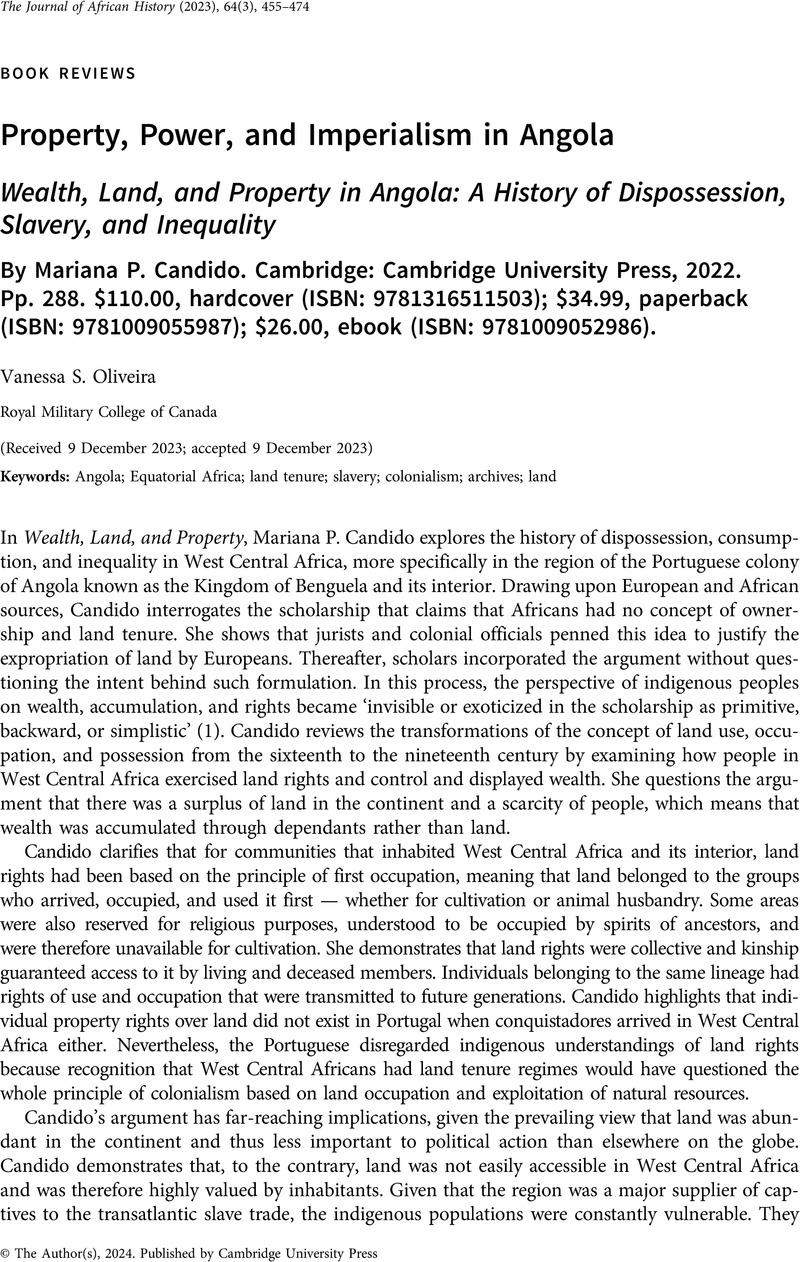No CrossRef data available.
Article contents
Property, Power, and Imperialism in Angola - Wealth, Land, and Property in Angola: A History of Dispossession, Slavery, and Inequality By Mariana P. Candido. Cambridge: Cambridge University Press, 2022. Pp. 288. $110.00, hardcover (ISBN: 9781316511503); $34.99, paperback (ISBN: 9781009055987); $26.00, ebook (ISBN: 9781009052986).
Review products
Wealth, Land, and Property in Angola: A History of Dispossession, Slavery, and Inequality By Mariana P. Candido. Cambridge: Cambridge University Press, 2022. Pp. 288. $110.00, hardcover (ISBN: 9781316511503); $34.99, paperback (ISBN: 9781009055987); $26.00, ebook (ISBN: 9781009052986).
Published online by Cambridge University Press: 09 January 2024
Abstract
An abstract is not available for this content so a preview has been provided. Please use the Get access link above for information on how to access this content.

- Type
- Book Review
- Information
- Copyright
- Copyright © The Author(s), 2024. Published by Cambridge University Press



